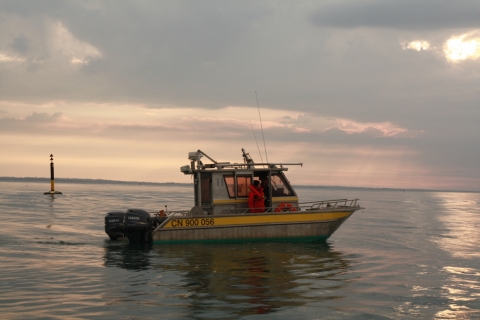
Annual Phytoplankton Primary Production Estimation in a Temperate Estuary by Coupling PAM and Carbon Incorporation Methods. Jérôme Morelle, Mathilde Schapira, Francis Orvain, Philippe Riou, Pascal Jean Lopez, Olivier Pierre-Duplessix, Emilie Rabiller, Frank Maheux, Benjamin Simon & Pascal Claquin. February 2018. Estuaries and Coasts. DOI10.1007/s12237-018-0369-8
Phytoplankton primary production varies considerably with environmental parameters especially in dynamic ecosystems like estuaries. The aim of this study was to investigate short-term primary production along the salinity gradient of a temperate estuary over the course of 1 year. The combination of carbon incorporation and fluorescence methods enabled primary production estimation at short spatial and temporal scales. The electron requirement for carbon fixation was investigated in relation with physical-chemical parameters to accurately estimate primary production at high frequency. These results combined with the variability of the photic layer allowed the annual estimation of primary production along the estuary. Phytoplankton dynamics was closely related to salinity and turbidity gradients, which strongly influenced cells physiology and photoacclimatation. The number of electrons required to fix 1 mol of carbon (C) was ranged between 1.6 and 25 mol electron mol C⁻¹ with a mean annual value of 8 ± 5 mol electron mol C⁻¹. This optimum value suggests that in nutrient replete conditions like estuaries, alternative electron flows are low, while electrons transfer from photosystem II to carbon fixation is highly efficient. A statistical model was used to improve the estimation of primary production from electron transport rate as a function of significant environmental parameters. Based on this model, daily carbon production in the Seine estuary (France) was estimated by considering light and photic zone variability. A mean annual daily primary production of 0.12 ± 0.18 g C m⁻² day⁻¹ with a maximum of 1.18 g C m⁻² day⁻¹ in summer was estimated which lead to an annual mean of 64.75 g C m⁻² year⁻¹. This approach should be applied more frequently in dynamic ecosystems such as estuaries or coastal waters to accurately estimate primary production in those valuable ecosystems.
BOREA contact:
Jérôme Morelle, jerome.morelle@unicaen.fr
